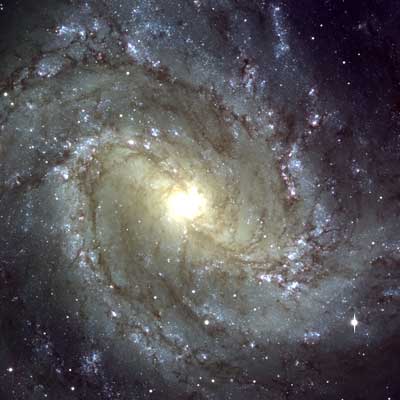A team of astronomers from Argentina used some of the most controversial observatories and computer analysis methods to find that the M83 galaxy 15 million light-years away contains at least two separate black holes.

Most galaxies, like the cells in the body, contain only a single nucleus in their center - however some galaxies have more than one nucleus. A team of astronomers from Argentina used some of the most controversial observatories and computer analysis methods to find that M83, a galaxy 15 million light-years away, is one of those with more than one.
M83 is one of the most beautiful spiral galaxies visible in the Southern Hemisphere sky. The galaxy contains a bright nucleus and two beautiful arms, and it can also be viewed in small amateur telescopes. In larger instruments, the galaxy whose apparent area is one-third that of the full moon begins to show cracks near the center. This means that the huge clouds of gas and dust are collapsing under the pull of the giant star clusters.
However, as mentioned, a team of researchers who photographed in the spectrum close to visible light, there are probably some super massive black holes. None of them are exactly in the center of the galaxy.
In an article entitled "A Double Nucleus in M83", published on May 13, three Argentinian astronomers from the National Observatory in Córdoba wrote that they confirmed the presence of a secondary nucleus or a large concentration of mass that was first proposed by another team in 2000. The three write that the second nucleus is not visible in visible light in the images taken From the Hubble Space Telescope, this is mainly to concentrate dust that hides it in visible light. Therefore, the three had to use complex software that performs spectral analysis technologies - in addition to archival images of observations in the radio field to reveal, something that was only suspected in the images taken by another astronomer named Theta, when he used the very large 8-meter telescope in Chile in 2000. The result - we now know that the nucleus The second is 3.9 arc seconds (about 200 light years) northwest of M83's optical center.

One response
I'm crazy